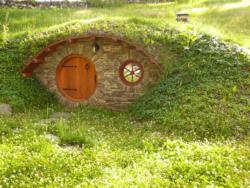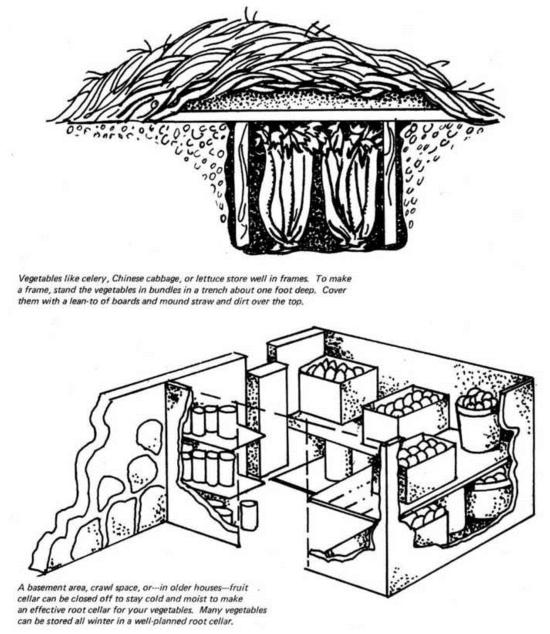Natural cold storage
-
Root cellars have been found in the remains of ancient civilizations, beginning in prehistoric times. Even now driving through areas where old homes are no longer standing, occasionally we can spot the remains of a root cellar because quite often potato vines will be visible. They might be growing from the sunken area that had been a root cellar, or they could be growing on the surface of a mound of earth, also formerly a root cellar. In those days without supermarkets, fresh vegetables were not available, so a root cellar, a cool place to "put up" food for the winter, was a necessity.

Root cellars of one type or another were found in various places throughout the world. It is one of the ways we can learn a great deal about those who came before us. They used them in Europe extensively, so it is not unusual that our pioneers brought the idea of root cellars over the waters into our country. They were a way of life that we can count among the lost now, but they were once a crucial link in the subsistence chain. It wouldn't hurt us a bit if we took a serious look at them now.
The root cellar kept apples, carrots, turnips, potatoes and squash through the winter, sustaining a family through those cold winter months. Salt pork and smoked meats were also kept in the root cellar if they did not have a smoke house. According to most sources, an 8'x10' root cellar will accommodate 60 bushels of produce.
- Whole grains will remain in good condition for two or three years if kept cool, dry, and insect free. A tightly closed dark container will make this possible. Grains do not belong in a damp root cellar.
- Cured meats, especially ham and bacon, can be kept in a root cellar that is 40 degrees F, or below.
- Root vegetables can be left in the ground until hard frost, and that way the temperature in your root cellar is more likely to be at an optimal level.
- You do not have to clean most vegetables, that could possibly do more harm than good, but be sure to store only your best.
- Keeping the temperature around 32 degrees at all times, is the single most important thing to remember.
- Store vegetables after the first frost, when the outside temperature closely matches the root cellar temperature.
- Inspect your stored foods weekly.
- If your winters are mild, it might be better to store your root vegetables in a heavily mulched area underground.
- Some humidity will keep your stored vegetables from shriveling. If the cellar has a natural dirt floor it will provide its own humidity, but the containers should not be placed directly on the floor. We had loosely strewn gravels on our dirt floor. Sand or sawdust will also help because they absorb excessive surface humidity from the dirt floor.
- It is important that the cellar be kept dark.
- Canned goods can be stored but it is best to use them within a year, since humidity over a period of time can damage them.
- If the temperature gets below 32 degrees inside the root cellar, hot coals can provide some heat.
Here is a short list of foods that can be kept for several months in a root cellar: Apples, beets, brussel sprouts, Chinese cabbage, carrots, horseradish, onions, parsnips, sweet potatoes (cured), white potatoes, pumpkins (with stems), rutabagas, squash, turnips, and possibly late planted tomatoes for a short time.
If you have access to a root cellar, of if you plan to make one for your winter food storage, it would be best if you familiarized yourself with the longevity of each vegetable's storage. Those with high water content, particularly the green leafed vegetables, have shorter life spans.
There are many ways to make a root cellar, and the Internet is full of possibilities that are sure to fit your needs. I have listed several sites that will direct you to more information for building, creating, and even for using an old refrigerator or a couple of barrels as root cellars. Considering that many of us like to store our food, and many of us feel a need to do so, root cellars of any sort have an appeal. The low tech, low maintenance root cellar is a natural choice. It keeps your food safely for months, without refrigeration or electricity. If you can dig a hole, you can have a root cellar.


